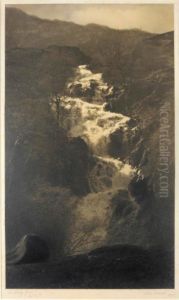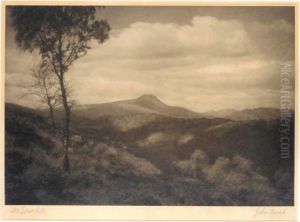John Baird Paintings
John Baird was a Scottish artist known primarily for his landscape and marine paintings. Born in 1859 in Scotland, Baird's early life was rooted in an environment rich with the natural beauty of the Scottish countryside, which later became a central theme in his artistic work. Despite the lack of detailed records regarding his early education and artistic training, it is evident from his technique and compositions that he received formal training in art. His works often depicted the rugged Scottish landscapes, coastal scenes, and occasionally, scenes from his travels abroad.
Throughout his career, Baird exhibited a profound connection to the Scottish landscape, capturing its unique light, texture, and mood. He was particularly adept at conveying the dramatic weather conditions and the changing seasons of Scotland, which endeared him to both the public and critics alike. Baird's paintings are characterized by their detailed brushwork, vibrant colors, and the ability to evoke a sense of place and atmosphere. This was a time when landscape painting was evolving, influenced by the Impressionists, and Baird managed to incorporate some of these influences into his work while maintaining a distinctive style that was rooted in the Scottish tradition.
John Baird's contributions to the art world were recognized through exhibitions at various prestigious venues, including the Royal Scottish Academy and the Royal Glasgow Institute of the Fine Arts. Despite his success, Baird remained relatively modest about his achievements and dedicated to his craft until his death in 1917. His legacy is preserved in the collections of several Scottish museums and galleries, where his work continues to be appreciated for its depth, beauty, and portrayal of Scotland's natural landscape. Baird's dedication to capturing the essence of the Scottish landscape has made him an important figure in Scottish art history, celebrated for his ability to capture the transient beauty of nature.

